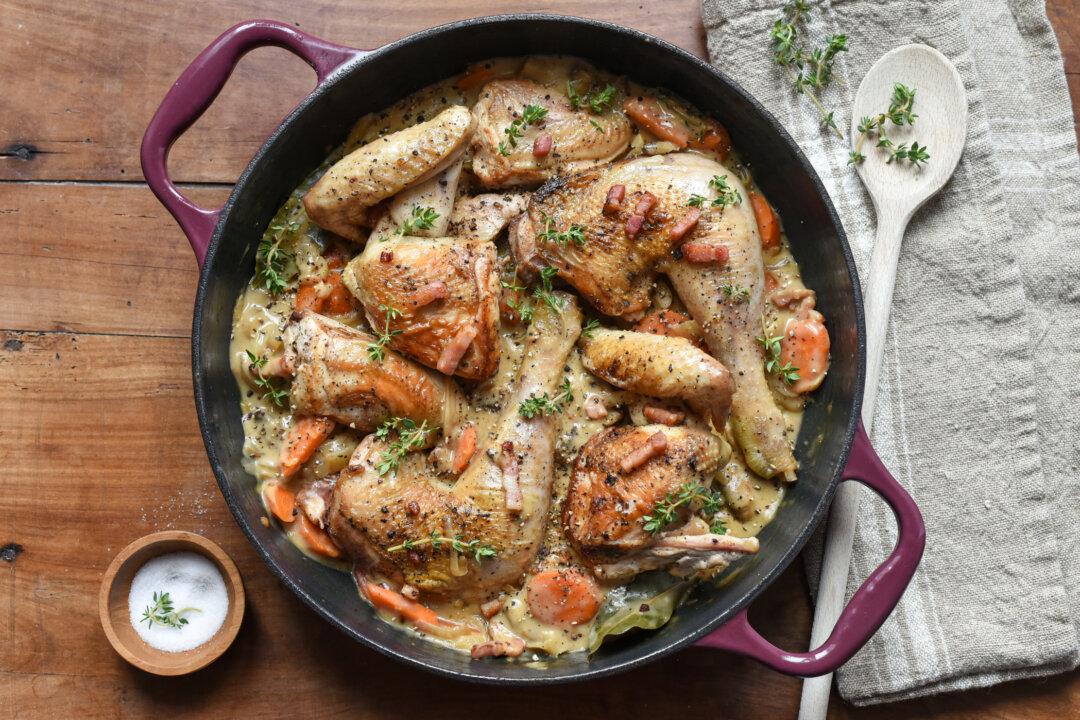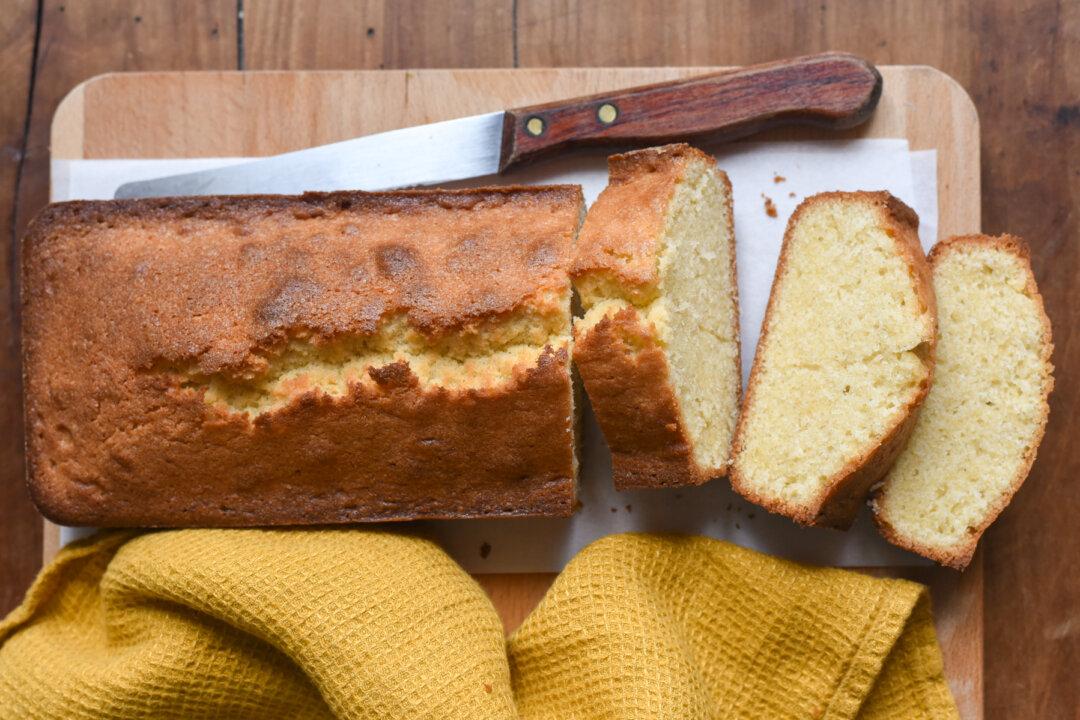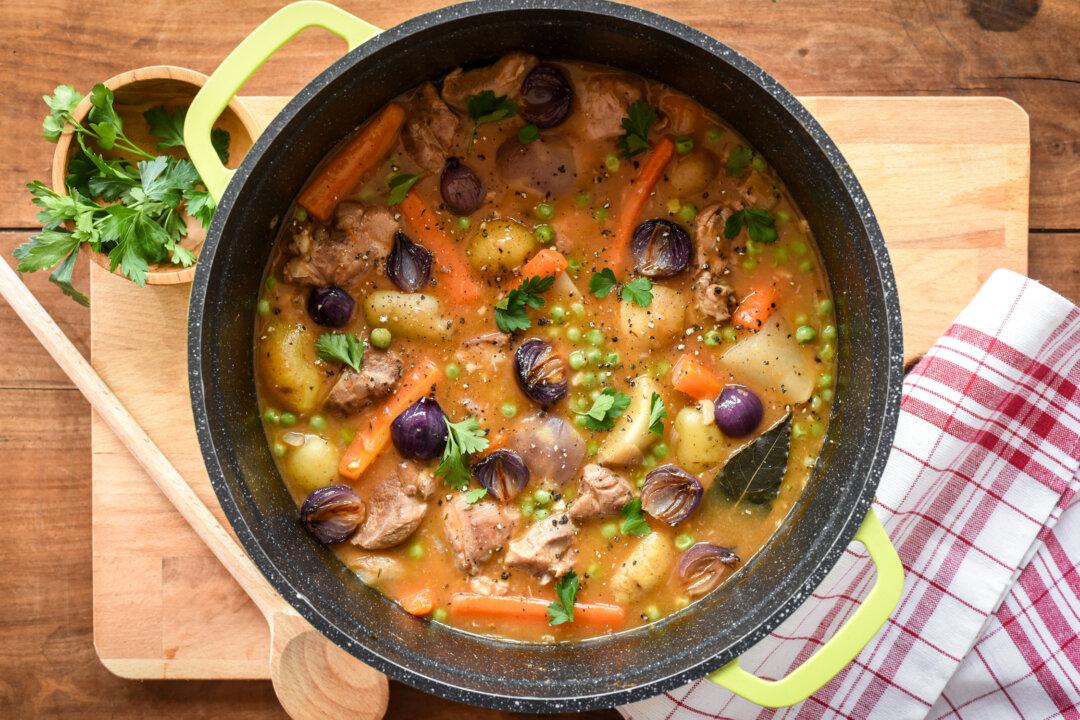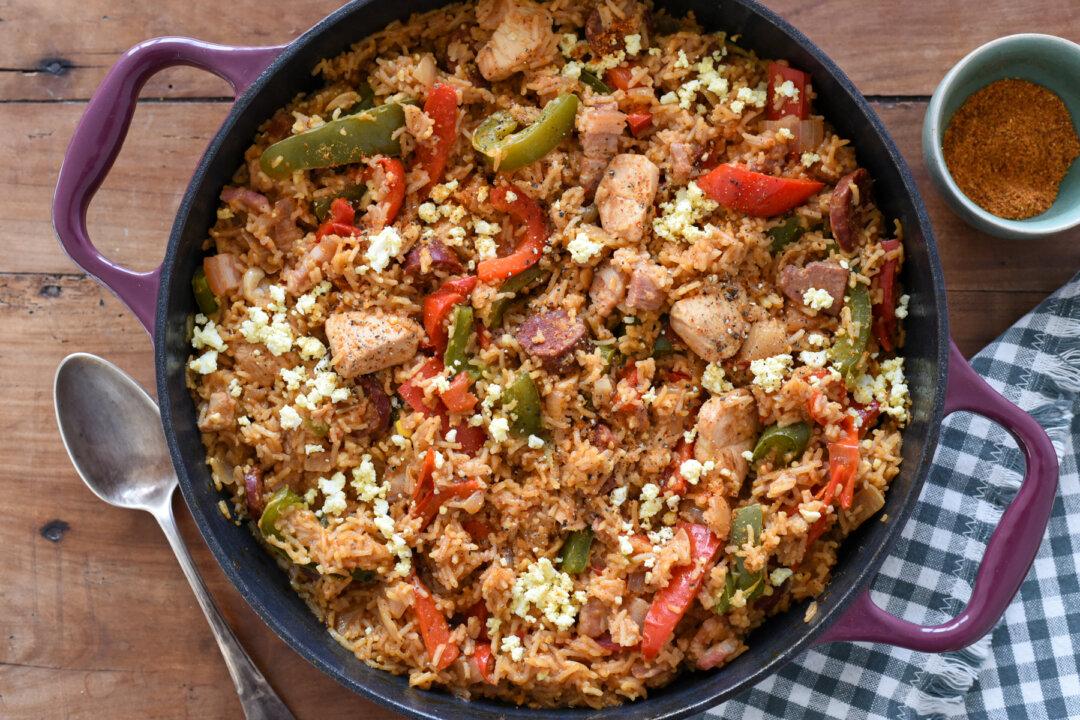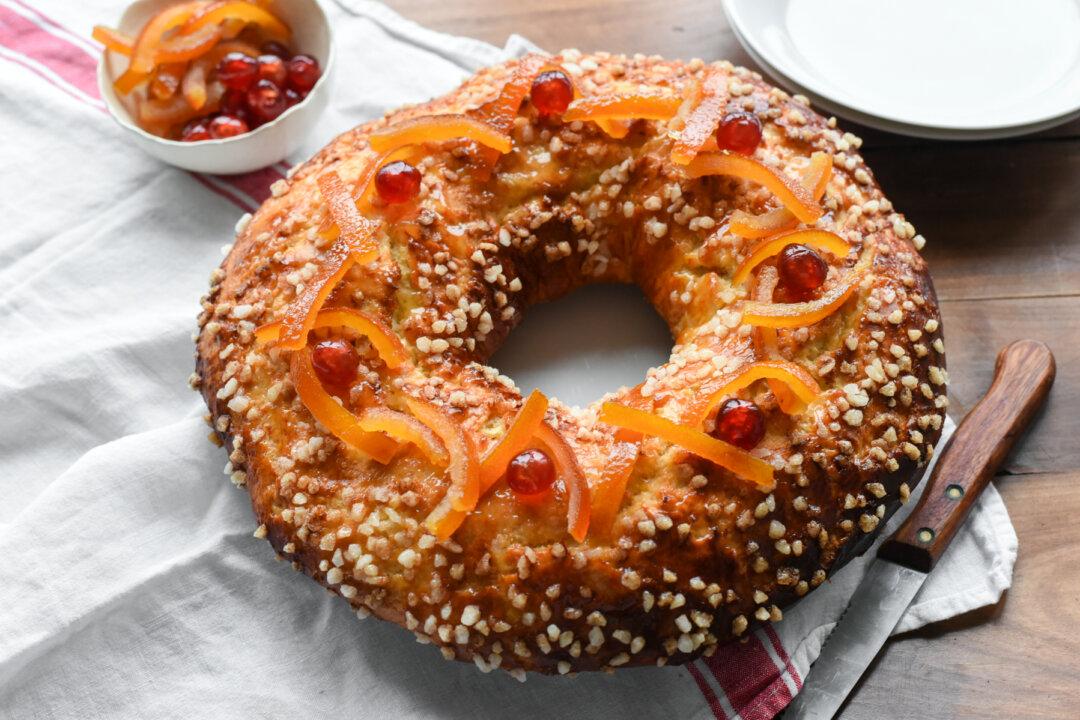Fricassée de poulet is a homey, rustic dish that yields pure French comfort. It features braised chicken pieces and vegetables in an aromatic white wine sauce, which can be prepared in two different ways. The “à l’ancienne” or “old-fashioned” version calls for thickening the sauce with cream, while the no-cream version yields a lighter, yet still flavorful meal that’s perfect for spring gatherings.
What Is a Fricassée?
A fricassée is halfway between a sautéed dish and a stew. This French classic isn’t a specific recipe, but rather the name for a hybrid cooking method for meat that relies on both dry and wet heat.The idea is to start by sautéing meat in a pan with butter and oil to get it browned and crisp. Liquid—typically white wine and stock—is then added, and the meat is braised with vegetables and aromatics until juicy and full-flavored.

